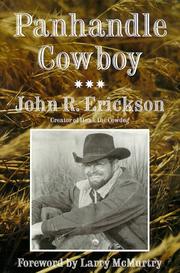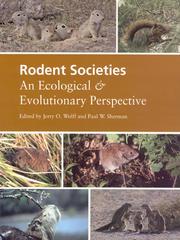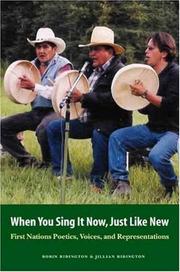| Listing 1 - 10 of 14 | << page >> |
Sort by
|
Book
ISBN: 9546425826 9789546425829 9789546425812 9546425818 Year: 2011 Publisher: Sofia ; Moscow : Pensoft,
Abstract | Keywords | Export | Availability | Bookmark
 Loading...
Loading...Choose an application
- Reference Manager
- EndNote
- RefWorks (Direct export to RefWorks)
Book
ISBN: 0801460867 9780801460869 9780801450105 0801450101 Year: 2011 Publisher: Ithaca : Comstock Pub. Associates,
Abstract | Keywords | Export | Availability | Bookmark
 Loading...
Loading...Choose an application
- Reference Manager
- EndNote
- RefWorks (Direct export to RefWorks)
The Beaver: Its Life and Impact is designed to satisfy the curiosity and answer the questions of anyone with an interest in these animals, from students who enjoy watching beaver ponds at nature centers to homeowners and land managers. Color and black-and-white photographs document every aspect of beaver behavior and biology, the variety of their constructions, and the habitats that depend on their presence.A second edition of The Beaver: Ecology and Behavior of a Wetland Engineer, published by Cornell University Press under its Comstock Publishing Associates imprint in 2003, this book has been revised throughout and includes a new section on population genetics and features updated data about the beaver's range in North America, reintroduction efforts in Europe, and information about the world's largest beaver dam, discovered in northern Alberta in 2010 and visible from space, as well as the most current bibliography on the subject.As this book shows, the beaver is a keystone species-their skills as foresters and engineers create and maintain ponds and wetlands that increase biodiversity, purify water, and prevent large-scale flooding. Biologists have long studied their daily and seasonal routines, family structures, and dispersal patterns. As human development encroaches into formerly wild areas, property owners and government authorities need new, nonlethal strategies for dealing with so-called nuisance beavers. At the same time, the complex behavior of beavers intrigues visitors at parks and other wildlife viewing sites because it is relatively easy to observe.
Beavers. --- Beaver --- Castor (Mammals) --- Castoridae --- Castorids --- Rodents

ISBN: 0585263094 9780585263090 1574410644 Year: 1999 Publisher: [Place of publication not identified] University of North Texas Press
Abstract | Keywords | Export | Availability | Bookmark
 Loading...
Loading...Choose an application
- Reference Manager
- EndNote
- RefWorks (Direct export to RefWorks)
Ranch life --- Cowboys --- United States Local History --- Regions & Countries - Americas --- History & Archaeology --- Bronco busters --- Broncobusters --- Buckaroos --- Buckeroos --- Stockmen (Animal industry) --- Vaqueiros --- Vaqueros --- Cattle herders --- Horsemen and horsewomen --- Gauchos --- Farm life --- Frontier and pioneer life --- Erickson, John R., --- Crown Ranch (Okla.) --- Beaver County (Okla.) --- Social life and customs. --- Beaver Co., Okla. --- Erickson, John Richard,
Book
ISBN: 9780228012931 Year: 2022 Publisher: Montreal, Quebec : McGill-Queen's University Press,
Abstract | Keywords | Export | Availability | Bookmark
 Loading...
Loading...Choose an application
- Reference Manager
- EndNote
- RefWorks (Direct export to RefWorks)
A captivating account of the formative years of one of Canada's best-known artists, Jackson's Wars follows A.Y. Jackson's education and progress as a painter at home and in Europe. Douglas Hunter captures the life of a complex man and the crucial events and relationships behind the creation of Canada's best-known art collective.
Painters. --- Painters --- Jackson, A. Y. --- Albert Robinson. --- Beaver Hall Group. --- Canadian art. --- Frank Carmichael. --- Frederick Varley. --- Great War. --- Group. --- JEH MacDonald. --- Johnston. --- Lawren Harris. --- Lord Beaverbrook. --- National Gallery Canada. --- Randolph Hewton. --- Seven. --- Tom Thomson. --- World War One. --- landscape art. --- painting. --- war art.
Book
ISBN: 1283394049 9781283394048 9780123809216 0123809215 9786613394040 9780123809209 0123809207 Year: 2012 Publisher: London : Elsevier,
Abstract | Keywords | Export | Availability | Bookmark
 Loading...
Loading...Choose an application
- Reference Manager
- EndNote
- RefWorks (Direct export to RefWorks)
The Laboratory Rabbit, Guinea Pig, Hamster, and Other Rodents is a single volume, comprehensive book sanctioned by the American College of Laboratory Animal Medicine (ACLAM), covering the rabbit, guinea pig, hamster, gerbil and other rodents often used in research. This well-illustrated reference won a 2012 PROSE Award for Best Single Volume Reference in Science from the Association of American Publishers. The book includes basic biology, anatomy, physiology, behavior, infectious and noninfectious diseases, husbandry and breeding, common experimental methods, and use of the species as a
Biopharmaco-efficiency. Pharmacokinetics --- Laboratory animals --- Rabbits as laboratory animals --- Guinea pigs as laboratory animals --- Hamsters as laboratory animals --- Animals, Experimental --- Animals, Laboratory --- Animals in research --- Experimental animals --- Lab animals --- Animal culture --- Laboratory organisms --- Working animals --- Animal experimentation --- Disease Models, Animal --- Rabbits --- Rodentia --- Animals, Laboratory. --- Disease Models, Animal. --- Rabbits. --- Rodentia. --- Proefdierkunde --- 619.001.5/8 --- Rodents --- Beavers --- Capybaras --- Castor Beaver --- Dipodidae --- Hydrochaeris --- Jerboas --- Beaver --- Capybara --- Hydrochaeri --- Jerboa --- Rodent --- Rodentias --- Chinchilla Rabbits --- NZW Rabbits --- New Zealand White Rabbits --- Oryctolagus cuniculus --- Belgian Hare --- New Zealand Rabbit --- New Zealand Rabbits --- New Zealand White Rabbit --- Rabbit --- Rabbit, Domestic --- Chinchilla Rabbit --- Domestic Rabbit --- Domestic Rabbits --- Hare, Belgian --- NZW Rabbit --- Rabbit, Chinchilla --- Rabbit, NZW --- Rabbit, New Zealand --- Rabbits, Chinchilla --- Rabbits, Domestic --- Rabbits, NZW --- Rabbits, New Zealand --- Zealand Rabbit, New --- Zealand Rabbits, New --- cuniculus, Oryctolagus --- Animal Disease Model --- Animal Disease Models --- Disease Model, Animal --- Models, Biological --- Laboratory Animals --- Animal, Laboratory --- Laboratory Animal --- Biomedical Research
Book
ISBN: 192683691X 1926836901 9781926836911 9781926836928 1926836928 9781926836904 9781926836904 Year: 2017 Publisher: Edmonton, Alberta : Athabasca University Press,
Abstract | Keywords | Export | Availability | Bookmark
 Loading...
Loading...Choose an application
- Reference Manager
- EndNote
- RefWorks (Direct export to RefWorks)
Over the past two decades, the oil sands region of northeastern Alberta has been the site of unprecedented levels of development. Alberta's Lower Athabasca Basin tells a fascinating story of how a catastrophic ice age flood left behind a unique landscape in the Lower Athabasca Basin, one that made deposits of bitumen available for surface mining. Less well known is the discovery that this flood also produced an environment that supported perhaps the most intensive use of boreal forest resources by prehistoric Native people yet recognized in Canada. Studies undertaken to meet the conservation requirements of the Alberta Historical Resources Act have yielded a rich and varied record of prehistoric habitation and activity in the oil sands area. Evidence from between 9,500 and 5,000 years ago—the result of several major excavations—has confirmed extensive human use of the region's resources, while important contextual information provided by key ecological and palaeoenvironmental studies has deepened our understanding of how the region's early inhabitants interacted with the landscape. Touching on various elements of this rich environmental and archaeological record, the contributors to this volume use the evidence gained through research and compliance studies to offer new insights into human and natural history. They also examine the challenges of managing this irreplaceable heritage resource in the face of ongoing development.Contributors: Alwynne B. Beaudoin, Janet Blakey, Luc Bouchet, James A. Burns, Grant M. Clarke, Gloria J. Fedirchuk, Timothy G. Fisher, Duane G. Froese, Eugene M. Gryba, John W. (Jack) Ives, Raymond J. Le Blanc, Murray Lobb, Thomas V. Lowell, Brian O. K. Reeves, Elizabeth C. Robertson, Brian M. Ronaghan, Laura Roskowski, Nancy Saxberg, Jennifer C. Tisher, Stephen A. Wolfe, Robin J. Woywitka, Robert R. Young, Angela M. Younie
Paleontology --- Canada --- Antiquities. --- Canada (Province) --- Province of Canada --- Dominion of Canada --- Ḳanadah --- Ḳanade --- Kanada (Dominion) --- Chanada --- كندا --- Канада --- Καναδάς --- Kanadas --- Republica de Canadá --- Dominio del Canadá --- Kanado --- کانادا --- Ceanada --- Yn Chanadey --- Chanadey --- 캐나다 --- Kʻaenada --- Kanakā --- קנדה --- カナダ --- Canadae --- Kanadaja --- 加拿大 --- קאנאדע --- Upper Canada --- Lower Canada --- Jianada --- Kaineḍā --- Syncrude, Suncor, EIA, oil sands, tar sands, beaver river sandstone, lithic resource, Fort McMurray.

ISBN: 0226905381 128196686X 9786611966867 9780226905389 9781281966865 9780226905365 0226905365 9780226905372 0226905373 Year: 2007 Publisher: Chicago : University of Chicago Press,
Abstract | Keywords | Export | Availability | Bookmark
 Loading...
Loading...Choose an application
- Reference Manager
- EndNote
- RefWorks (Direct export to RefWorks)
Rodent Societies synthesizes and integrates the current state of knowledge about the social behavior of rodents, providing ecological and evolutionary contexts for understanding their societies and highlighting emerging conservation and management strategies to preserve them. It begins with a summary of the evolution, phylogeny, and biogeography of social and nonsocial rodents, providing a historical basis for comparative analyses. Subsequent sections focus on group-living rodents and characterize their reproductive behaviors, life histories and population ecology, genetics, neuroendocrine mechanisms, behavioral development, cognitive processes, communication mechanisms, cooperative and uncooperative behaviors, antipredator strategies, comparative socioecology, diseases, and conservation. Using the highly diverse and well-studied Rodentia as model systems to integrate a variety of research approaches and evolutionary theory into a unifying framework, Rodent Societies will appeal to a wide range of disciplines, both as a compendium of current research and as a stimulus for future collaborative and interdisciplinary investigations.
Rodents --- Social behavior in animals. --- Animal societies. --- Social behavior in animals --- Animal behavior --- Animal societies --- Rodentia --- Mammals --- Ecology. --- Evolution. --- social behaviour --- rodents, social behavior, ecology, conservation, population management, environment, nonfiction, science, nature, biogeography, reproduction, diseases, socioecology, antipredator strategies, predation, cooperation, communication, cognition, behavioral development, neuroendocrine mechanisms, genetics, biology, evolution, mating, sexual selection, breeding, tree squirrels, stress, dimorphism, sex ratio, kin recognition, adaptation, foraging, blind mole rats, beaver, prairie dogs, infanticide, capybaras.
Book
ISBN: 077482557X 9780774825573 9780774825559 0774825553 9780774825566 0774825561 077482297X 9780774822978 9780774822954 0774822953 9780774822985 0774822988 9780774822961 0774822961 Year: 2013 Publisher: Vancouver : UBC Press,
Abstract | Keywords | Export | Availability | Bookmark
 Loading...
Loading...Choose an application
- Reference Manager
- EndNote
- RefWorks (Direct export to RefWorks)
Situated within the area stretching from Georgian Bay in the north to Lake Simcoe in the east, the Wendat Confederacy flourished for two hundred years. By the mid-seventeenth century, however, Wendat society was under attack. Disease and warfare plagued the people, culminating in a series of Iroquois assaults that led to their ultimate dispersal. Yet the Wendat did not disappear, as many historians have maintained. In Dispersed but Not Destroyed, Kathryn Magee Labelle examines the creation of a Wendat diaspora in the wake of the Iroquois attacks. In the latter half of the century, Wendat leaders continued to appear at councils, trade negotiations, and diplomatic ventures, relying on established customs of accountability and consensus. Women also continued to assert their authority during this time, guiding their communities toward paths of cultural continuity and accommodation. Turning the story of Wendat conquest on its head, this book demonstrates the resiliency of the Wendat people and writes a new chapter in North American history.
Indians of North America --- Wyandot Indians --- Guyandot Indians --- Huron Indians --- Wanat Indians --- Wandot Indians --- Weinondot Indians --- Wendat Indians --- Wundat Indians --- Wyandott Indians --- Wyandotte Indians --- Iroquoian Indians --- History --- Indigenous peoples --- Wyandot --- Tsattine Indians --- Oral tradition --- Oral history --- History. --- Doig River First Nation. --- Blueberry River First Nation. --- Oral biography --- Tradition, Oral --- Oral communication --- Folklore --- Beaver Indians --- Dane-zaa Indians --- Dreamer Indians --- Dunne-za Indians --- Dunneza Indians --- Athapascan Indians --- Methodology
Book
ISBN: 3319615335 3319615327 Year: 2017 Publisher: Cham : Springer International Publishing : Imprint: Springer,
Abstract | Keywords | Export | Availability | Bookmark
 Loading...
Loading...Choose an application
- Reference Manager
- EndNote
- RefWorks (Direct export to RefWorks)
This book integrates the results of Dr. Carol Johnston’s research on beaver ecosystem alteration at Voyageurs National Park, a mature beaver-altered landscape named after the French-Canadian voyageurs who transported packs of beaver pelts through the region more than 250 years ago. The text synthesizes information about the vegetation, soils, and chemistry of beaver impoundments, bridging the fields of ecosystem science and landscape ecology to analyze the dynamics of a beaver-altered landscape. The findings from this mature system can inform other scientists and managers about the sustainability and long-term ecosystem effects of beaver activity that is still expanding in much of North America. These findings are also compared to studies of beaver-occupied landscapes in other locations, including the Adirondacks, Tierra del Fuego, and other national parks. Dr. Carol A. Johnston is Professor of Ecology in the Department of Natural Resource Management at South Dakota State University. She is a Certified Professional Soil Scientist, a Fellow of the Society of Wetland Scientists, and a life member of the Ecological Society of America.
bever --- Life sciences. --- Animal ecology. --- Ecosystems. --- Landscape ecology. --- Wildlife. --- Fish. --- Life Sciences. --- Animal Ecology. --- Fish & Wildlife Biology & Management. --- Landscape Ecology. --- Beavers --- Ecology. --- Habitations. --- Beaver --- Castor (Mammals) --- Castoridae --- Castorids --- Rodents --- Wildlife management. --- Endangered ecosystems. --- Ecology --- Threatened ecosystems --- Biotic communities --- Nature conservation --- Animal populations --- Game management --- Management, Game --- Management, Wildlife --- Plant populations --- Wildlife resources --- Natural resources --- Wildlife conservation --- Animals --- Zoology --- Management --- Biocenoses --- Biocoenoses --- Biogeoecology --- Biological communities --- Biomes --- Biotic community ecology --- Communities, Biotic --- Community ecology, Biotic --- Ecological communities --- Ecosystems --- Natural communities --- Population biology --- Fish --- Pisces --- Aquatic animals --- Vertebrates --- Fisheries --- Fishing --- Ichthyology

ISBN: 1280705353 9786610705351 0803258585 9780803258587 9781280705359 0803239599 0803290098 9780803239593 9780803290099 6610705356 Year: 2006 Publisher: Lincoln : Baltimore, Md. : University of Nebraska Press, Project MUSE,
Abstract | Keywords | Export | Availability | Bookmark
 Loading...
Loading...Choose an application
- Reference Manager
- EndNote
- RefWorks (Direct export to RefWorks)
A collection of essays examining the issues surrounding the listening, recording, and sharing of First Nations voices, stories, and songs. These essays, which contextualize stories within anthropology, flow from Robin Ridington and Jillian Ridington's decades of work with the Athapaskan-speaking Dane-zaa people, who live in Peace River area.
Tsattine Indians --- Beaver Indians --- Dane-zaa Indians --- Dreamer Indians --- Dunne-za Indians --- Dunneza Indians --- Athapascan Indians --- Indians of North America --- Social life and customs. --- Songs and music. --- British Columbia --- Colombie-Britannique --- British Columbia (Colony) --- Colony of British Columbia --- United Colonies of Vancouver Island and British Columbia --- Brits-Kolombië --- Britaniya Kolumbiyası --- Брытанская Калумбія --- Brytanskai︠a︡ Kalumbii︠a︡ --- Britanska Kolumbija --- Британска Колумбия --- Britanska Kolumbii︠a︡ --- Colúmbia Britànica --- Britská Kolumbie --- Britisk Columbia --- Britisch-Kolumbien --- Briti Columbia --- Βρετανικη Κολομβια --- Vretanikē Kolomvia --- Province of British Columbia --- B.C. (British Columbia) --- BC --- C.-B. (Province) --- Vancouver Island (Colony)
| Listing 1 - 10 of 14 | << page >> |
Sort by
|

 Search
Search Feedback
Feedback About UniCat
About UniCat  Help
Help News
News